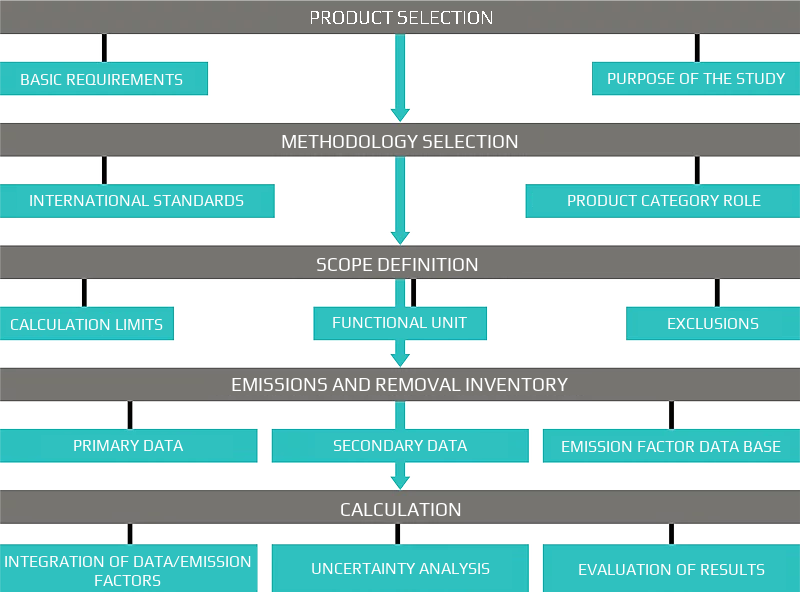HOW IS THE CARBON FOOTPRINT CALCULATED?
The calculation of the carbon footprint involves the design of the life cycle of the product to be analyzed, through which a data collection phase is carried out, together with the manufacturer and suppliers, the necessary phases are defined to production by identifying the materials, fuels, energy consumption and waste that are generated. Each of these elements has a series of GHG emissions associated directly or indirectly, the sum of which totals the CF of the product we are analyzing. To estimate the indirect emissions corresponding, for example, to the extraction of the raw materials used, or those dependent on the electricity mix used by the manufacturers of the product, international databases with emission factors such as Ecoinvent or the Database offered by the Spanish Office of Climate Change are used.
As a sample of the exhaustive information that is needed to calculate the CF of a product, only some data are commented according to the phases, considering as an example a transformed agricultural product:
- Cultivation phase: use of fertilizers, pesticides, fuels, etc.
- Transformation phase: energy sources, amount of energy and water used, packaging, waste treatment, etc.
- Transport phase: type of transport used, fuels, etc.
It is necessary to determine the inputs and outputs of the system in the process of manufacturing the products. The calculation of emissions generally requires interviews with the producers, collecting all the data regarding the use of resources and raw materials, the consumption of fuels in agricultural work and fertilization, transformation, transportation and storage. In addition, it must be taken into account that some phases of the life cycle may imply absorption of CO2, so it would not be an emitter but a sink in that phase, including it with a negative value in the total calculation.
The following figure shows a synthesis of how the calculation of the CF would be approached:

Methodological scheme for calculating the carbon footprint (own elaboration)
In summary, the calculation of the CF is quite complex, since it implies considering the emissions that have occurred throughout the life cycle of a product or service. Those emissions can be very varied depending on how a product is extracted or cultivated, from where it is transported or the type of energy been used in the manufacturing process.
In consequence, in this observatory we have opted for the available scientific studies, choosing as reference values those that may be closest to the conditions of our environment. When several studies were available, we have included averages and extreme values, to get a better idea of the variety that can be presented depending on the growing, transformation or transport conditions. These are the values that have been included in the Explore Alternatives section and in Your Carbon Footprint. In each section, we link the data to the reference from which we have extracted them, so that the interested reader can further deepen about the calculation process.

















